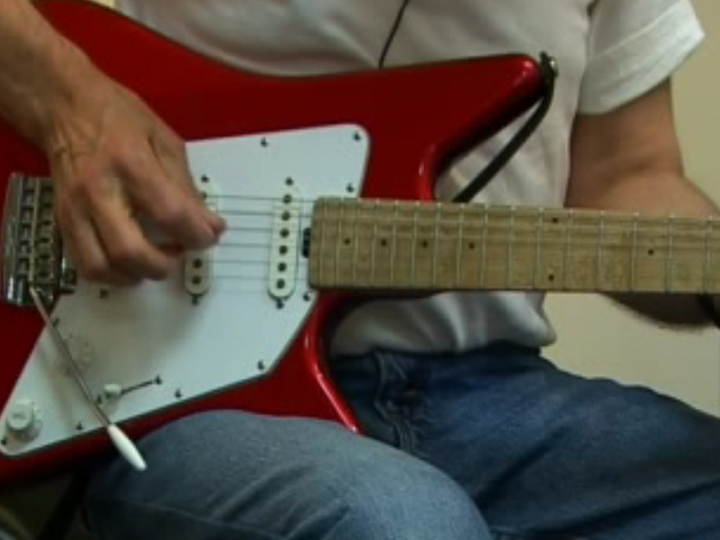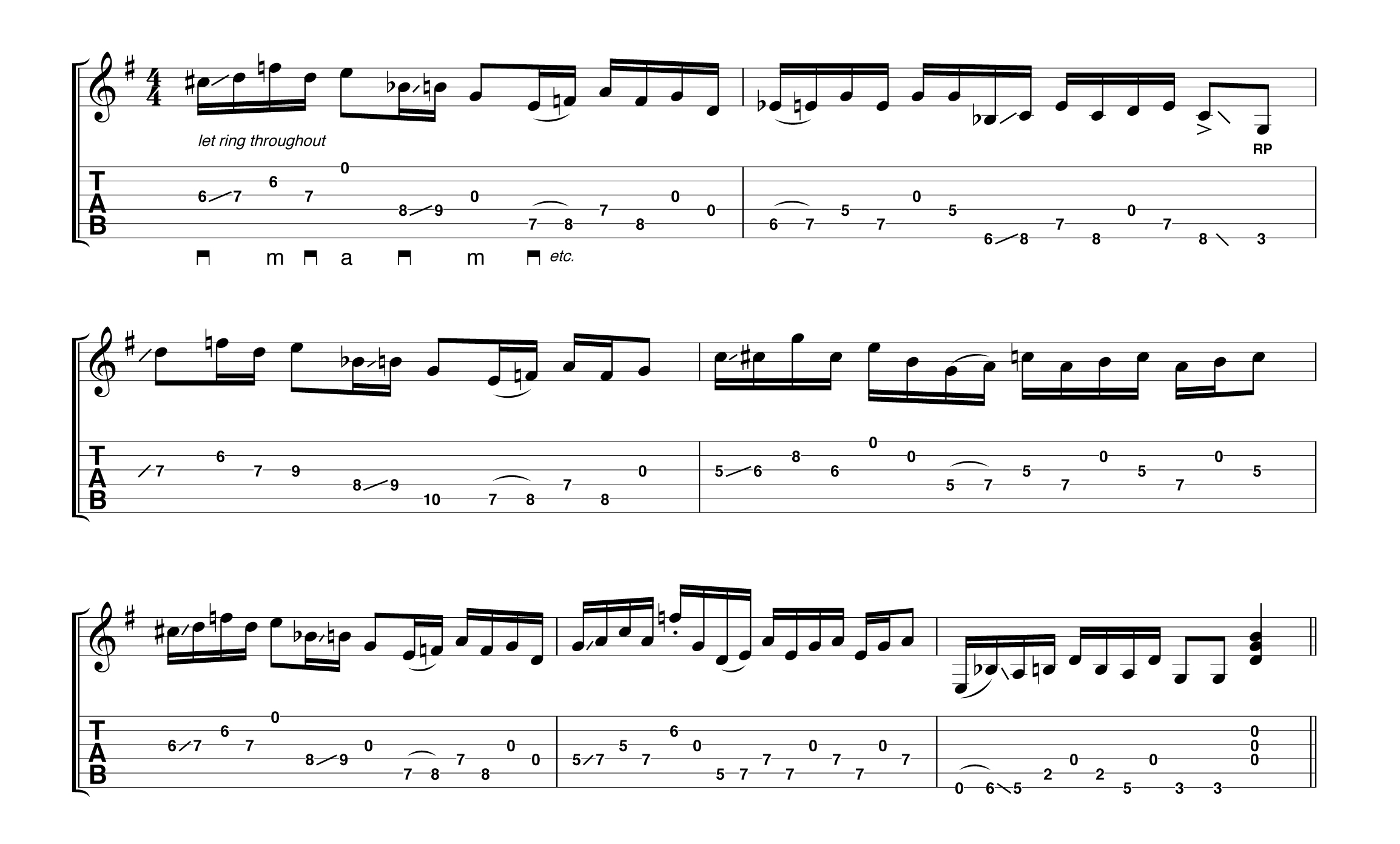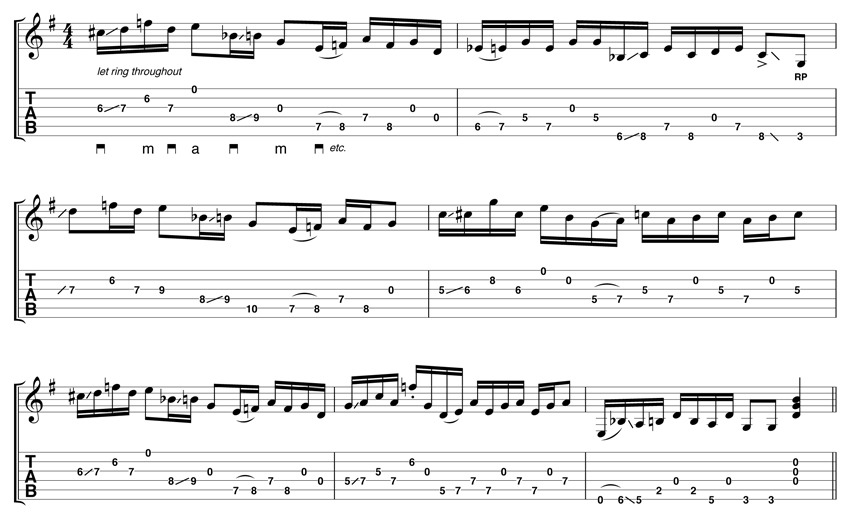Albert Lee on banjo-style rolls
Check out this video lesson with free tab



Albert Lee's famous track Country Boy first appeared in 1979. It's become a gigging favourite that's been admired and mimicked alike. It features rapid-fire banjo-style licks and 'chicken picking' aplenty.
Click here for all Albert Lee video lessons.
His video lesson uses hybrid picking in a rolling motion, and usually involves the pick, m and a fingers. The banjo effect comes from using lots of open strings in between picked notes to create a long flurry of notes.
The first example uses the open third string to create a unison sound, together with the F# to G hammer-on to create a banjo-like sound. The difficulty here is getting it up to speed, and especially coordinating the pick and fingers. Start slowly - as with any new technique - as it's essential that each note is even.
The second lick uses more open strings and more semitone slides to give a more chromatic bluesy sound. You'll find that your hand needs to move around very quickly, so you'll need to spend some time adjusting your fingers into the right position.
Look closely at the main shapes Albert uses and you should notice a pattern emerge. Most of the shapes use a 5th chord or minor 3rd chord, which both use fingers one and three. From there it's a question of hammering or sliding up from one fret below to give us a banjo effect.
You can learn the examples in the video by following our free tab.
If you want more Albert Lee lessons then check out our other videos on rhythm playing and 12-bar blues variations.
Get the MusicRadar Newsletter
Want all the hottest music and gear news, reviews, deals, features and more, direct to your inbox? Sign up here.
For more information visit the official Albert Lee website.
Tab

Example 1 (Click image above for full-sized tab) - A variation on the picking indications we've given could be to use the thumb for the bass note, followed by the i and m fingers on subsequent strings. Ultimately, use whichever technique is most comfortable.

Example 2 (Click image above for full-sized tab) - Try practising the initial two-bar phrase or even the first five notes, to get a hang of utilising the open strings in between fretted chord shapes. Aim for a 'let ring' sound throughout, so you should let each note blend into the next until you have to shift into a new position.
If you are new to tab then check out our tab guide.









